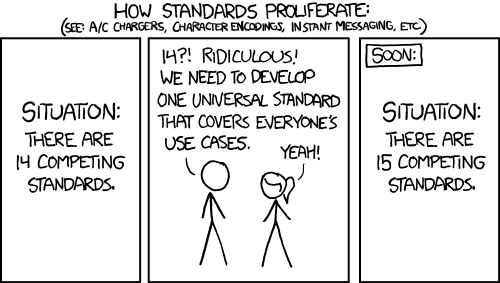There is a five-alarm fire in the hobby board game industry right now.
The Trump Administration’s tariffs on Chinese goods, currently at 145%, mean that the hobby board game industry in this country is in dire straits. The vast majority of board games are printed and produced in China, as Jamey Stegmaier has been writing over on the Stonemaier Games blog, 145% tariffs are a crushing blow that very few publishers are prepared to weather.
In their current form and implementation, the tariffs have resulted in an unexpected and unprecedented tax on small US businesses (and any business that manufactures in China and imports into the US), particularly those who invested in production runs before the tariffs even existed. Those companies are now stuck with products that they cannot bring into the US without paying a $14.50 tariff tax for every $10 they already spent on manufacturing. Many will go out of business, and others will exhaust their cash reserves. As a result, the tariffs are decreasing the number of businesses that can invest in US manufacturing.
—Jamey Stegmaier, “How Can We Fix This Together?”
We’ve already begun to see the effects, too. Greater Than Games, a publisher responsible for the much-praised Spirit Island and Compile, has dramatically reduced their team, essentially shuttering development and operations. CMON, whose portfolio includes Zombicide (and its myriad versions and expansions), Blood Rage, and Sheriff of Nottingham, announced a similar retraction in operations. An industry report by Cardboard Edison suggests that most publishers are bracing for higher prices, smaller print runs, delayed print runs, and fewer games—with nearly a quarter of respondents saying they’d simply stop making board games under tariffs. And as economists have been warning, not just for board games, but across the economy at large, even if tariffs are later withdrawn, this sort of volatile brinksmanship is no way to establish confidence. What business owner would want to take out loans and sign contracts to move production operations to the United States if tomorrow, the President could declare in a midnight Truth Social rant that the tariffs are halved now?
It’s grim.
This particular mortal wound was absolutely unnecessary, inflicted by an empty shell of a man who needs to inflict pain and amass power to fill the void in his soul where his father poured abuse and neglect instead of love, enabled by sycophants and weirdos who fantasize about domination instead of, y’know, living a normal life in this big and complex world. This wound didn’t have to happen, which makes it sting all the more bitterly, and we should not allow it to be forgotten: whether this hobby dies or just limps along following these tariffs, its blood is on the hands of Donald Trump and his Republican Party enablers.1
But everything dies. There are universes where board gaming lived longer; there are none where it existed in this state forever. I would have preferred a more peaceful death for my beloved hobby, but, well, we all know that Death rarely consults with the living.
The End of the Golden Age #
Games reviewer and journalist Quintin Smith said previously that we were living in a golden age for board gaming. For a couple decades, at least here in the US, you could find brilliant board games at almost any price point. A Button Shy microgame or small-box classic like Coup, Cockroach Poker, or For Sale would run you roughly the cost of a lunch out. At around $50, you could get the legendary cooperative game Pandemic, draft adorable sushi in Sushi Go Party!, or crack puzzles with your team in Decrypto or Codenames. And the hobby was becoming increasingly mainstream. Not too long ago, the only games you could find at big-box stores like Target were the insipid Hasbro and Parker Brothers titles and their ilk: Monopoly, Connect 4, The Game of Life. Now? Hell, for two years, there was a Spirit Island set you could only get at Target!
Every one of these games and the thousands more being published each year was a unique product. They had boxes, components, manuals. Each box was shipped across the ocean and conveyed via plane, train, and automobile to store shelves. There’s plastic in their shrink-wrap shells, the cores of their cards, the brightly colored cubes or fancy miniatures, and often the box inserts that hold them—the Golden Age of Board Gaming has required a lot of black gold to sparkle.
Don’t get me wrong, I’m grateful for the abundance. I’ve reveled in it too; on just the other side of the room from me is a shelf literally overflowing with games. But like so many modern luxuries, the bounty of board games is an abundance built on extracted resources. Unless you stick your head in the sand or engage in magical thinking—as, admittedly, many do—you can’t really get around that fact. Non-renewable resources will, eventually, run out. We can’t keep burning oil and littering our environment with microplastics at the rate we have been and expect any part of human existence, least of all our board game hobbies, to exist in the same form. Sooner or later, board gaming, like much of our modern luxuries, will change, either because we intentionally choose less destructive options, or because there’s simply no humans left to play.
Sketching Out Collapse #
In my journal and private musings, I’ve been calling this looming change the Collapse. Of course, reality is not as clear-cut as that dramatic title suggests. William Gibson famously said, “The future is already here—it’s just not evenly distributed.” Margaret Killjoy reminds us that the apocalypse is the same way; the mechanisms of empire, combined with brute geography, mean that by the time I’m experiencing Collapse, billions have already suffered much more, including millions within my own country who were never afforded the privileges or luxuries I now watch slipping from my own fingers. I am an absolute newcomer to this show.
Scavenged Games and Game Systems #
Modern consumer capitalism has convinced us that we all need to be self-sufficient islands. My favorite example of this is lawn mowers. If you’ve got a traditional turf lawn, you’re probably going to need to mow it at some point.2 Even accounting for different lawn sizes and available hours for mowing, a given neighborhood block probably doesn’t need more than a few lawn mowers. There’s likely only ever a handful of people mowing at the same time. But without social bonds with our neighbors, without a sense of community interdependence, you have a problem: you don’t own a lawn mower unless you buy one yourself. Each atomized, isolated household is its own potential customer. Oil, metal, and minerals are extracted from the depths of the earth, processed, molded, and assembled into lawn mowers that are shipped across the ocean… and even after we buy them, they sit, idle, waiting for the few hours a summer we pull them out of the shed. We pay so much for the luxury of mowing the lawn exactly when we want and not suffering the inconvenience of coordinating with a neighbor.
Board games suffer from the same sort of problem, a fact which James Ernest identified in the mid-1990s when he started Cheapass Games. Ernest realized that if you had multiple board games, you likely had duplicates of many components, and reasonable substitutes for even more. Like lawn mowers, the logic isn’t hard to see—if you buy Monopoly at the store, you want it to contain ready-to-play Monopoly, not a note that says, “Before you start, swipe a couple six-sided dice from your Yahtzee set.” And yet, multiplied across all the boxes on a board game shelf, this reasonable independence begins to look a lot like waste. Cheapass Games were sold as slim envelopes containing little more than cards or boards on printer paper and a manual. If the game needed pawns or dice, you were encouraged to scavenge them from another game on your shelf.
James Ernest’s website currently declares that “the future for Cheapass Games remains a mystery,” but for my money, I think Ernest was ahead of his time. During the late ’90s and early Aughts, Cheapass was competing against a growing number of lavishly produced designer board games. He was offering a minimalist product in a time of maximalism. But the winds are shifting, and I wouldn’t be surprised to see a Cheapass Games-style renaissance of games stocked with scavenged pieces.
Another related approach is what I call the Universal Games Kit. It’s a small fascination of mine, and it seems I share the affliction with a small number of other board gamers. The Universal Games Kit, like the Cheapass model, also has the potential to cut down on board game waste, but whereas Cheapass is agnostic about the components, the Game Kit aims to carefully engineer a “common core” of components. Kevan Davis’s Emergency Games Kit is a prime example of the form: with carefully chosen components like six d6, plastic poker chips, and a deck of highly modified playing cards, Davis can recreate at least 100 different games, all in a package the size of a pencil case. Under a Games Kit model, rather than scrounging for pieces, gamesellers might offer a single “core” set of components, then sell individual games, Cheapass-style, as rules to be played using that core.
In the long run, however, I think a Universal Games Kit is merely a step on the evolution towards game systems. There’s no better example of a games system than the poker deck. A 52-card poker deck is the best deal in gaming; buy one and you can play hundreds of games. What’s more, its ubiquity and standardization means that games are transferrable as nothing more than rulesets. If you have a deck of cards and only know Go Fish, I can teach you War and Egyptian Rat Screw and triple your play possibilities with that same deck. You don’t have to purchase a single new component.
There are currently a couple game systems for board games that I’m aware of:
- The Piecepack is a public-domain game system consisting of dice, tiles, pawns, and disks in four suits.
- Looney Pyramids are multi-purpose abstract game pieces consisting of nesting pyramids in three different sizes and any number of colors.
- The [Green Box of Games][green-box] aimed to strike at similar turf to the Piecepack, but contained cards and cubes instead of pawns and discs.
You’ll notice that there is no single obvious standard. That’s a problem to be solved in this space. A designer would have to pick one of the existing systems and hope they were backing Blu-Ray and not HD DVD. Or they could try to create their own standard system, but, well…

All these approaches share a key strategy for reducing board game waste: divorce the components from the rulesets. Rulesets take up little space. When they’re parsimonious enough, they can even be transmitted orally. By decreasing specialized components and instead relying on a common core of standard pieces, we give players more games while requiring less space and fewer resources. In other words, we share the lawn mower.
Now, this approach is not without tradeoffs. Obviously, it is not feasible to translate every modern board game into something that could be played with scavenged pieces or a Universal Games Kit. I’m looking at my copy of Arcs and the Blighted Reach expansion next to my desk as I write this. How are you going to replicate that with a piecepack? You’re not. Of course you’re not.
I don’t know what the future looks like. I’d hope that there’s still room in the post-Collapse world for games artisans who want to craft larger, more intricate games, because the art form deserves exploration. My hunch, though, is that they won’t be nearly as common, because [BOOGY BOOGY EXPLAIN WHY BIG BOXES OR INTRICATE GAMES ARE PROBABLY GOING TO WANE] and I’m saddened to think that.
Another loss of this type of approach pertains to aesthetics. When your games draw on shared components, there’s much less room for bespoke illustrations.
Print-and-Play and Other DIY Games #
Folk Games #
SCRAPS #
Modern hobby board gaming was always going to die. But like the carcass of a whale falling to the seabed, the industry is presently ripe with the life-giving creativity, design experience, and scholarship of a flourishing field.
So what might we make of it?
-
Remember that Article I, Section 8 of the United States Constitution gives the power to enact and collect tariffs to Congress. Congressional Republicans could pass a bill restricting the President’s tariffs, repeal the parts of the International Emergency Economic Powers Act of 1977 that the administration has used to justify the tariffs, terminate the national emergency with a vote as allowed in the National Emergencies Act of 1976, or just impeach the fucker, but not only have they done none of this, House Republicans have changed the definition of “calendar days” for this session of Congress so they don’t even have to vote on whether to extend the national emergency in six months. They are complicit. ↩︎
-
Replacing turf yards and/or maintaining them via manual tools and/or animal grazing are awesome ideas that are outside the scope of this point. 😜 ↩︎

